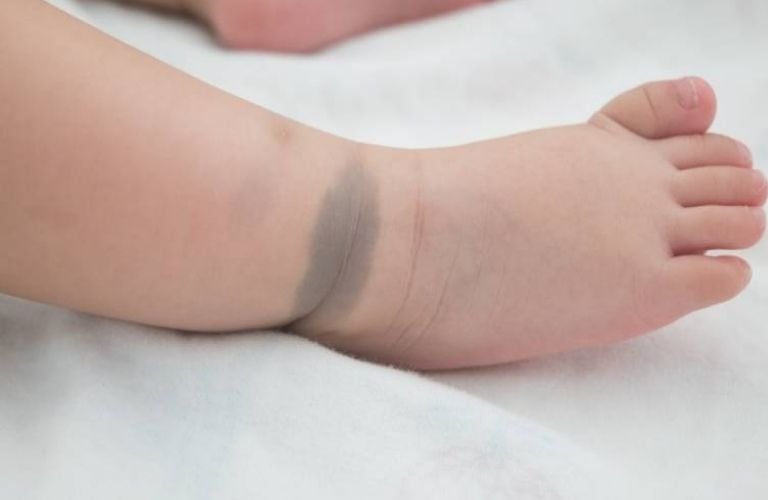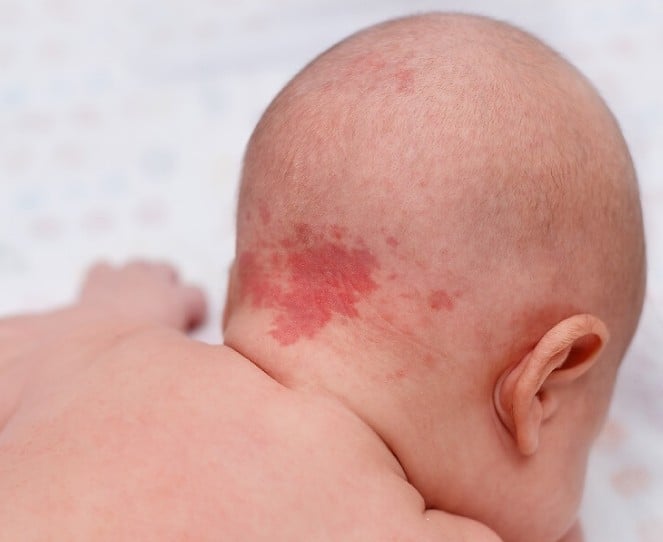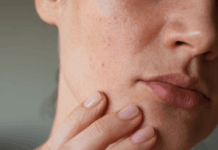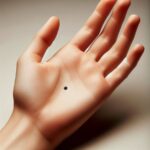Birthmarks, moles, and skin discolorations in newborns are common occurrences, ranging in color from red, yellow, black, to blue. Some of these marks may fade over time, while others will persist throughout their lives. While most are harmless, some may indicate serious medical conditions.
Here are some types of birthmarks that parents should pay extra attention to:
1. Congenital Nevus (Melanocytic Nevus)
Features: Black or brown in color, these marks can be flat or raised, ranging in size from a few millimeters to several centimeters. As the child grows, the mark may darken, become more prominent, and even develop hair.
Location: Can appear anywhere on the body but is commonly found on the torso, limbs, face, lower back, and thighs.
Risks: There is a possibility of these marks developing into malignant melanoma. The risk increases with the size of the mark. Larger marks, over 20 cm, or multiple marks may also indicate neurocutaneous melanosis.
Care: Small marks can be monitored periodically, while larger ones may require medical evaluation and possible surgical removal, laser treatment, or dermabrasion.

2. Port-Wine Stain
Features: Flat, reddish-purple patches with blurred borders. The color can range from red-pink to purple, and pressing on the mark lightens it. Unlike other birthmarks, port-wine stains do not fade over time but rather become darker and more raised.
Location: Commonly found on the face and neck, but can also appear on the torso and limbs.
Risks: May be associated with Sturge-Weber syndrome, leading to glaucoma, epilepsy, and cerebral vascular abnormalities.
Care: Early treatment (before the age of 1) is recommended. Pulsed dye laser treatment is the classic approach, offering both cosmetic improvement and control of the underlying condition.
3. Infantile Hemangioma
Features: Bright red, raised lesions that resemble a strawberry. They can be superficial, deep, or a combination of both. These marks grow rapidly during the first 1–3 months of life and usually regress after the age of one, disappearing by the age of four in most cases.
Location: Face, scalp, back, chest, and even mucous membranes or internal organs.
Risks: May cause obstruction in eating, breathing, and vision. They are also prone to ulceration, infection, and scarring. Multiple large lesions can impact cardiac function.
Care: Spontaneous regression is common, and treatment is typically considered only when there is a high risk of complications (e.g., ≥5 lesions, >2 cm in size, located in the face, ear, chest, or airway).

4. Café-au-lait Spots
Features: Light brown patches with a coffee-and-milk color. These spots are common, with about 30% of children having one or two. They can vary in shape and size.
Risks: The presence of ≥6 spots, along with freckling in the armpits, may indicate neurofibromatosis type 1, which can affect multiple organs.
Care: Typically, no treatment is required. Laser treatment can be used for cosmetic improvement, but recurrence is common.
5. Nevus of Ota
Features: Grayish-blue patches on the skin that often extend to the sclera (white of the eye). These marks persist throughout life.
Risks: Although rare, there is a possibility of these marks developing into malignant melanoma.
Care: Regular monitoring of both the skin and eyes is necessary. Laser treatment is the recommended approach.
6. Vitiligo
Features: Distinct white patches with well-defined borders. Vitiligo usually appears between the ages of 10 and 30 but can rarely be present at birth.
Location: Can appear anywhere on the body but is particularly noticeable in areas of friction, such as the fingertips, palms, and soles of the feet.
Risks: While vitiligo is a benign condition, it is chronic and challenging to treat. It can recur, impacting both the appearance and psychological well-being of the individual.
Care: Sun protection and avoidance of skin trauma are crucial. Treatment should follow a dermatologist’s protocol and include long-term monitoring.
When should parents seek immediate medical attention for their child’s birthmark?
- Birthmark larger than 20 cm, or multiple marks present.
- Rapid changes in color, size, or texture, especially if the surface becomes irregularly raised.
- The development of pain, itching, ulceration, or bleeding in or around the mark.
- Port-wine stain located in the eye, nose, or forehead region.
- Hemangioma >2 cm, more than 5 lesions, or if it interferes with eating, breathing, or vision.
- ≥6 café-au-lait spots, with a diameter >5 mm.
- Rapidly spreading vitiligo, especially with a family history of the condition.



































